FiiO BTR3K DAC/AMP Review

FiiO BTR3K Ultra Portable BT DAC/AMP Review
Introduction:
The BTR3K is the updated version of the original BTR3 which is a Hi-Res Bluetooth receiver with a very compact size that features 2x AK4377A DAC Chips, one for the 3.5mm TRS and one for the 2.5mm balanced TRSS output. It sports also Qualcomm’s CSR8675 BT 5.0 SoC which supports lossless Bluetooth codes such like LDAC and aptX HD and can be used also as USB DAC with your PC, Tablet of Smartphone.
- Product Web Page: https://www.fiio.com/btr3k

Disclaimer:
I would like to thank FiiO for providing me the FiiO BTR3K as review sample for review purposes. I am not affiliated with FiiO beyond this review and my words reflect the true and unaltered impressions about the product.
Price:
The FiiO BTR3K can be purchased form the official FiiO Stores that are listed below;
Package and Accessories:
The FiiO BTR3K came in a quite small white card-box that sports the product image on the top.

This box contains the following items;
- 1 x FiiO BTR3K Portable Bluetooth Receiver & Amplifier
- 1 x USB Type-C to USB A data and charging cable
- 1 x Transparent Protective Case with rear clip
- 1 x Lanyard
- 1 x Quick Start Guide
- 1 x Warranty card



Design, Buttons and Build Quality:
The FiiO BTR3K is very small and compact BT DAC/AMP like its predecessor and is even slimmer thanks to the drop of the rear clip which is now integrated to the transparent protective case that is included to the package. The device is a combination of glass on the front and back and a frame that is made of aluminum material in black color.

The BTR3K has a very compact size with dimension of 58×25×11mm and weight’s only 23.5grams that makes it highly portable.
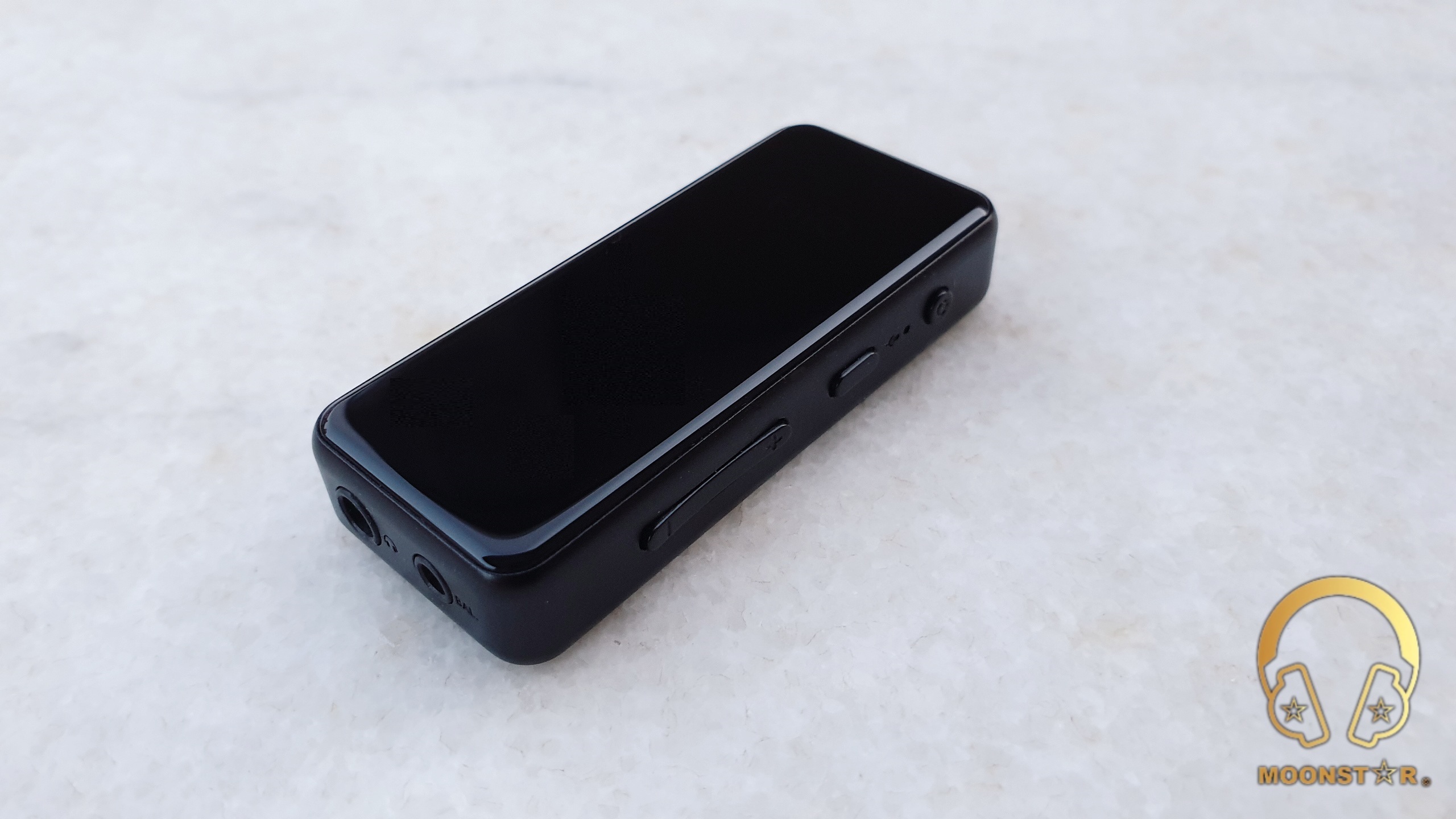
On the front of the FiiO BTR3K is the sleek 2.5D curved glass panel in black color that features a pretty effective oleophobic coating that keeps off annoying fingerprints from the surface.

Here is also an under screen RGB indicator in form of the FiiO Brand logo which lights up in various colors.

The right surface features the navigation buttons of the device where you can find the power button, a microphone, a multi functional button, and the volume “up/down button”, which also acts as previous and next track button.

At the bottom of the BTR3K are the 3.5mm TRS (Unbalanced) and the 2.5mm TRRS (Balanced) headphone outputs.

The top of the device sports a USB Type-C data and charging port.

The backside of the device has the same sleek glass panel that features the Hi-Res Wireless Logo and some industrial certifications.

The overall build quality of the BTR3K is of high quality and I really do like to hold this object in my hands.

Technical Specifications:
- Model : FiiO BTR3K
- Audio Input : Bluetooth 5.0
- Supported Codec’s : AAC, SBC, aptX, aptX Low Latency, aptX HD, LDAC and LHDC
- Bluetooth chip : Qualcomm CR8675
- DAC : 2 x AK4377A
- AMP : onboard AMP Included in AK4377A
- Frequency Response : 20~20kHz (aptX connection), 20~40kH (LDAC connection)
- THD+N (LDAC 1kHz) : 0.003% (Phone Out) / 0.002% (Balanced)
- SNR : 119dB (A-weighted) Phone Out / 122dB (A-weighted) Balanced
- Single Ended Output : 50mW@16 Ohm & 25mW@32 Ohm
- Balanced Output : 78mW@16 Ohm & 40mW@32 Ohm
- Output Impedance : 0.3 Ω – 32Ω loaded Phone Out / 0.5 Ω (Balanced
- Crosstalk : ≥ 73 dB – 32Ω loaded Phone Out / ≥ 108dB (Balanced)
- Drivability : 16~100 Ω (recommended)
- Battery : 330mAH
- Battery Life : about 11hours
- Charging Time : ≤1.5 h (DC 5V 500mA)
- USB Port : USB Type C
- Size : 58×25×11mm (exclusive of back clip)
- Weight : 23.5 g (incl. battery)
Hardware and Functionality:
The FiiO BTR3K sports a Qualcomm CR8675 Bluetooth Chip and 2x AK4377A DAC chips with build in amplifier.
a) Bluetooth Chip:
The Qualcomm CR8675 Bluetooth chip is the same one that we have seen inside the BTR3 which is a premium low-power solution designed for enhanced audio applications with support for 24-bit transmission and processing, thanks to its 120MHz DSP. This chip is also much more stable in signal strength than other competing chips, especially in situations with lots of interference. The FiiO BTR3K supports BT Version 5.0 while the BTR3 supports the older BT Version 4.2.
b) DAC and AMP Section:
The FiiO BTR3K comes with 2x AK4377A DAC’s of the company Asahi Kasei Microdevices which is a compact DAC with a build in headphone amplifier for portable audio products. It has some nice specs such as -107dB THD+N and signal to noise ratio (SNR) of 122dB.
The BTR3K is a small but pretty powerful device that offers 25mW @32 Ohm from the single ended output and 40mW@32 Ohm from the balanced output.

c) Pairing:
The BTR3K can be paired to other compatible pretty easily if you follow the steps bellow;
- Unlock your smart phone or tablet and turn on the Bluetooth;
- BTR3K is in pairing mode which means the blue and red lights flashing alternately.
To enter pairing mode:
- After powered on for the first time: the BTR3K would automatically enter the pairing mode, and the red and blue lights will flash alternately.
- Force the BTR3K to enter Pairing mode: Hold the button A for about 5 seconds when the device is on, and the red and blue lights will flash alternately.
- Then the BTR3K will appear on the list of Bluetooth device of the phone, and just click it to pair with the BTR3K.
d) USB DAC function:
The BTR3K adopts the Type-C connector, which is easier to use than older Micro USB connectors; this allows you to insert the cable in either way. The FiiO BTR3K supports also the USB DAC functionality without the need to install any driver, just simply plug and play!
The BTR3K in USB DAC mode supports sampling rates up to 48kHz/16bit.

e) Battery Life:
The FiiO BTR3K sports a 330 mAh battery which is 10% higher than those of the BTR3. A full charge takes around 1.5 hours.
My experiences in terms of battery life are listed bellow;
- Phone Out Low Power Mode : 11 – 10.5 hours (iPad Air – AAC codec)
- Phone Out High Power Mode : 9 hours (iPad Air – AAC codec)
- Balanced Out Low Power Mode : 10 hours (iPad Air – AAC codec)
- Balanced Out High Power Mode : 7 Hours (iPad Air – AAC codec)
The overall battery performance is pretty good for such a tiny device.
f) Hissing:
The both the 3.5mm single ended and the 2.5mm balanced outputs of the FiiO BTR3K do offer a very clean output with nearly zero amount of hissing which is device in this price category.
Supported Audio Formats:
The FiiO BTR3K supports almost any Bluetooth Audio codec such as AAC, SBC, aptX, aptX LL (Low Latency), aptX HD and LDAC.
The FiiO logo on the top of the device that I we have seen also on the BTR3 works as a codec indicator that light up in the following colors;
- SBC :Blue light flashing
- AAC :Cyan light flashing
- LDAC/DAC :White light flashing
- LHDC :Green light flashing
- aptX/aptX LL :Purple light flashing
- aptX HD :Yellow light flashing
Equipments used for this review:
- DAP&DAC’s : FiiO BTR3K, Earstudio ES100
- IEM’s : FiiO FH7, FiiO FD1, FiO FA9
- Headphones : SIVGA Phoenix, FiiO EH3 NC (Wired)

Albums & tracks used for this review:
- Fazıl Say – Nazım Oratoryosu (Live) (Flac 16bit/44.1kHz)
- Vivaldi – Le QuarttroStagioni “The Four Season” (Tidal Hi-Fi)
- Edith Piaf – Non Je Ne Regrette Rien (Flac 24bit/48kHz)
- Sertap Erener – Aşk (Spotify)
- London Grammar – Interlud (Live) (Flac 24bit/44kHz)
- Laura Pergolizzi – Lost On You “Live at Harvard and Stone” (Tidal Hi-Fi)
- Otto Liebert& Luna Negra – The River (Spotify)
- Armin Van Buuren – Vini Vici (Spotify)
- Leonard Cohen – You Wnt it Darker (Spotify)
- Dave Gahan – Kingdom (Tidal Hi-Fi)
- Eric Clapton – Wonderful Tonight True (Flac 24bit/96kHz)
- Chopin – Nocturn No. 20 In C-Sharp Minor (Flac 16bit/44.1kHz)
- Lorde – Royal (Flac 24bit/48kHz)
- Massive Attack – Angel (Flac 24bit/192kHz)
- Portishead – The Hidden Camera (MP3 320kpbs)
- Metallica – Sad but True (Flac 24bit/96kHz)
- Megadeth – Sweating Bullets (Tidal Hi-Fi)
- Rush’s – Leave That Thing Alone (Flac 16bit/44.1kHz)
- Slayer – Angel of Death (Spotify)
- Tom Player – Resonace Theory “Album” (Tidal Hi-Fi)
- Liquid Tension Experiment 2 – Acid Rain (Spotify)
The Sound:
The FiiO BTR3K has a mildly warmish close to neutral tonality with great detail retrieval for a BT DAC/AMP for this price category. It shows in general a pretty linear frequency response without to sound too sterile or dry.
2.5mm Balanced versus 3.5mm Single Ended:
The 2.5mm balanced output of the FiiO BTR3K is more powerful and offers a darker background compared to the regular 3.5mm phone out. The subbass region shows more depth, the midrange has slightly better level of clarity and detail retrieval while the treble range shows less difference compared to the 3.5mm single ended output.
Please note that my review below will mainly on my sound experiences with the 2.5mm Balanced output.

Bass:
The subbass region shows a sufficient performance for a BT DAC/AMP. The subbass is not very deep while it is enough for most modern genres. The subbass rumble and intensity in songs like Massive Attack’s “Angel” and Portishead’s “It Could Be Sweet” was on a moderate level.
The midbass region on the other hand is mildly pronounced, pretty controlled and fast, without to show any remarkable negative situations like muddiness, mixings or a midbass hump. The midbass quantity and extension is on an average level. Instruments from guitars up to the drums do show a pretty fast bass response which is a remarkable plus point for the BTR3.
The bass was able to shows a good performance in terms of speed and tightness in genres with complex bass passages like trash metal, which makes the BTR3K also to a successful device in terms of dynamism.

Midrange:
The FiiO BTR3K offers a fairly transparent, neutral and detailed midrange presentation with a slightly warm tonality. The lower midrange shows an average depth and intensity. Male vocals do sound clear, lively and fairly detailed.
Female vocals on the other hand are transparent, detailed and do show a good level of sparkle and control. I believe that those who listen to female vocals will find the BTR3K quite successful.
The FiiO BTR3K has an instrument tonality that is neither too thin nor too bold. Guitars for example are slightly bright and do show a good level of extension. Violins on the other hand are very successful in terms of intensity, detail and extension. Side flutes are fast, a bit bright and stirring.
The instrument timbre of the FiiO BTR3K is in general pretty clear and detailed. This ability makes the BTR3K to a highly competitive BT DAC/AMP. It is also a successful device in terms of separation and placement of instruments and vocals.
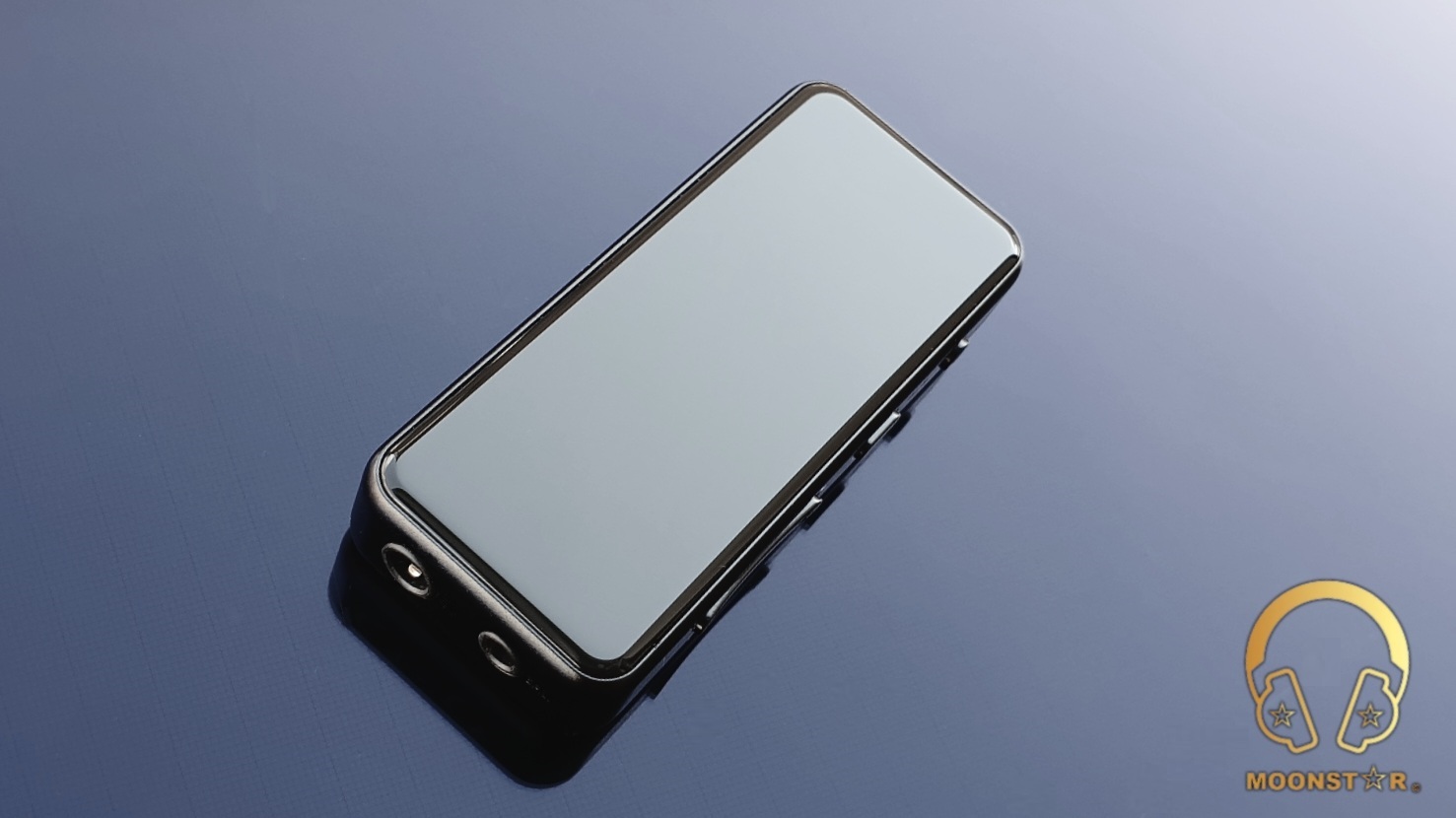
Upper Midrange and Treble:
The FiiO BTR3K offers a strong, clear and fairly sharp upper midrange presentation. The upper midrange transitions are in general controlled and don’t show any remarkable ear-piercings.
From female vocals to violins and pianos, the extension, emphasis and detail retrieval of the upper midrange are quite successful.
The FiiO BTR3K has a close to neutral, fairly bright and transparent treble presentation with good amount of airiness and sparkle. The treble extension is in general quite successful for a BT DAC/AMP at this price range. The BTR3K has shown a good performance in terms of treble intensity, extension and sharpness from Chopin’s Nocturne No.20 up to GoGo Penguin’s treble intensive Jazz passages.
It is remarkable to mention that the FiiO BTR3K shows a great treble performance in terms of detail, especially for a device at this price category.
The treble range is also pretty airy and spacious. Instruments like Hi-Hats do sound distinct and have a good level of extension, while crash and ride cymbals are pretty fast and very clear. The treble range has a good speed in genres like metal and jazz, up to EDM or Pop music without to show any remarkable over-sharpness.

Soundstage:
The FiiO BTR3K has a fairly large soundstage for a good instrument placement and definition. The BTR3K sounds also quite spacious and airy thanks to the pretty width stage and neutral tonality. The soundstage depth on the other hand shows an average performance compared to its wideness.
Comparison:
FiiO BTR3K versus Earstudio ES100:
The first difference between the Earstudio ES100 and the FiiO BTR3K is the quality of the material that is used. The FiiO BTR3K is by far superior in terms of build quality with a combination of metal and glass versus all plastic.
When it comes to the sound performance, I can say that the ES100 shows a softer and smoother overall presentation compared to the BTR3K.

The subass and midbass region of both devices is pretty similar and shows more midbass depth and intensity compared to the subbass region. Both devices are quite successful in terms of bass control and detail retrieval.
The midrange of the FiiO BTR3K has sounds more neutral and transparent than those of the ES100 that has a smoother and slightly more entertaining tonality. The upper midrange and treble region of the BTR3K is more accented, detailed and shows also a slightly better level of extension. The Earstudio ES100 offers a smoother presentation in the upper midrange and treble region with slightly better control.

The soundstage of both devices performs pretty well in terms of separation and placement f instruments and vocals, especially at this price level. The FiiO BTR3K has the upper hand in terms of soundstage wideness, while the Earstudio is more successful when it comes to the depth.

Conclusion:
The FiiO BTR3K is an Ultra Portable DAC/AMP with a very high value for your money. It offers a neutral tonality and pretty high level of detailed retrieval for a device at this price category and can be used both wired and wireless. The solid built quality, ultra small form factor and the additional 2.5mm balanced output are some of its remarkable features of this tiny device that I highly recommend!
Pos and Cons:
- + Neutral & Detailed Presentation
- + High Value for Your Money
- + Great Build Quality & Small Form Factor
- + 2.5mm Balanced Output & Output Power
- + Good Battery Life for such a Small and Powerful Device
- – Subbass Depth and Extension
- – Maybe too Neutral for your Taste

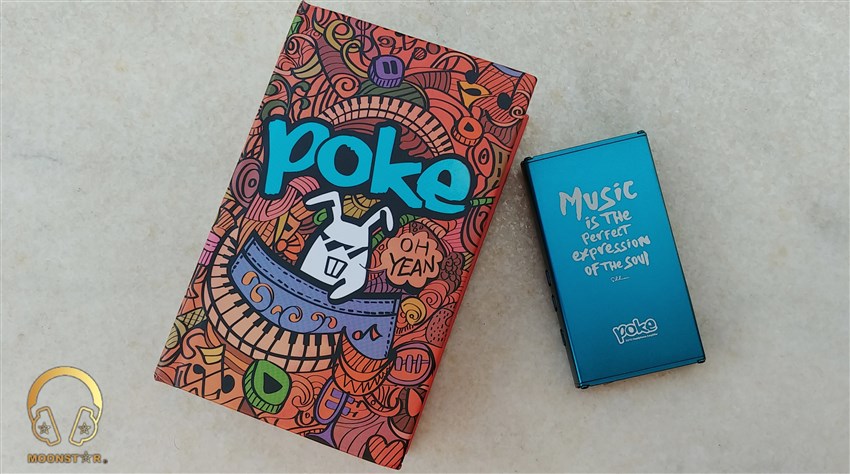
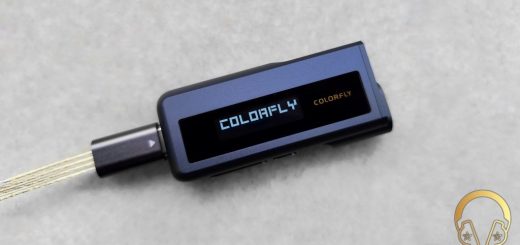
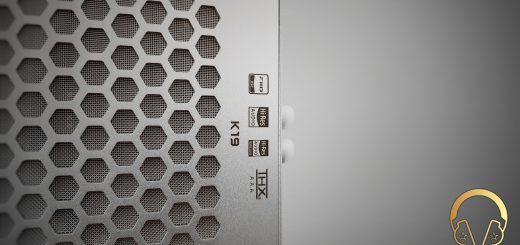








what price range IEMs would you say would benefit from the btr3k?
I have a few pairs and I’m just wondering which ones I should use with this amp.
Hi there, the BTR3K will be quite efficient within a IEM price range of 150-200 USD. Cheers!
The price range has nothing to with the benefict it gets from BTR3K, you have to consider the impedance and sensitivity of the iem.